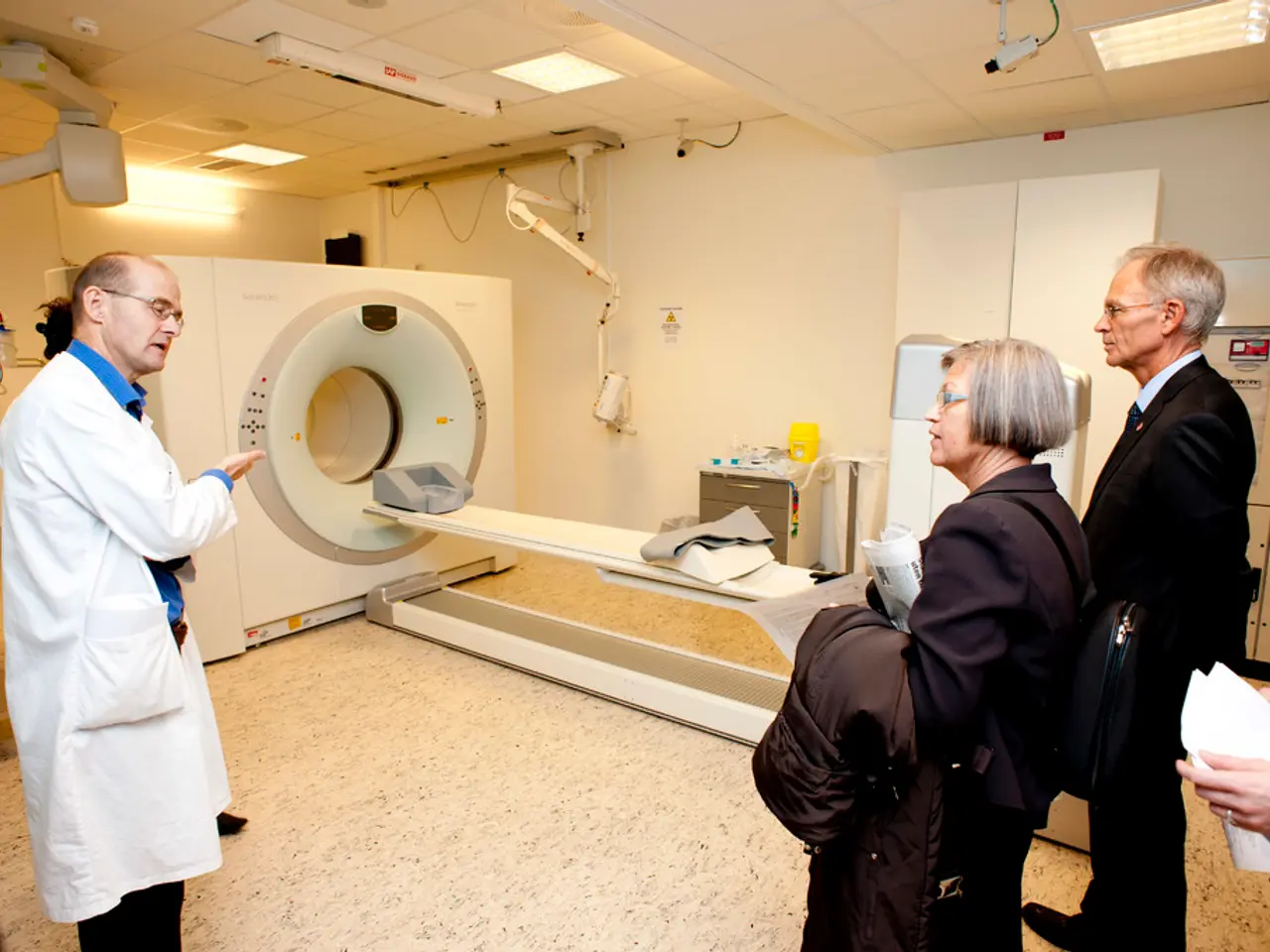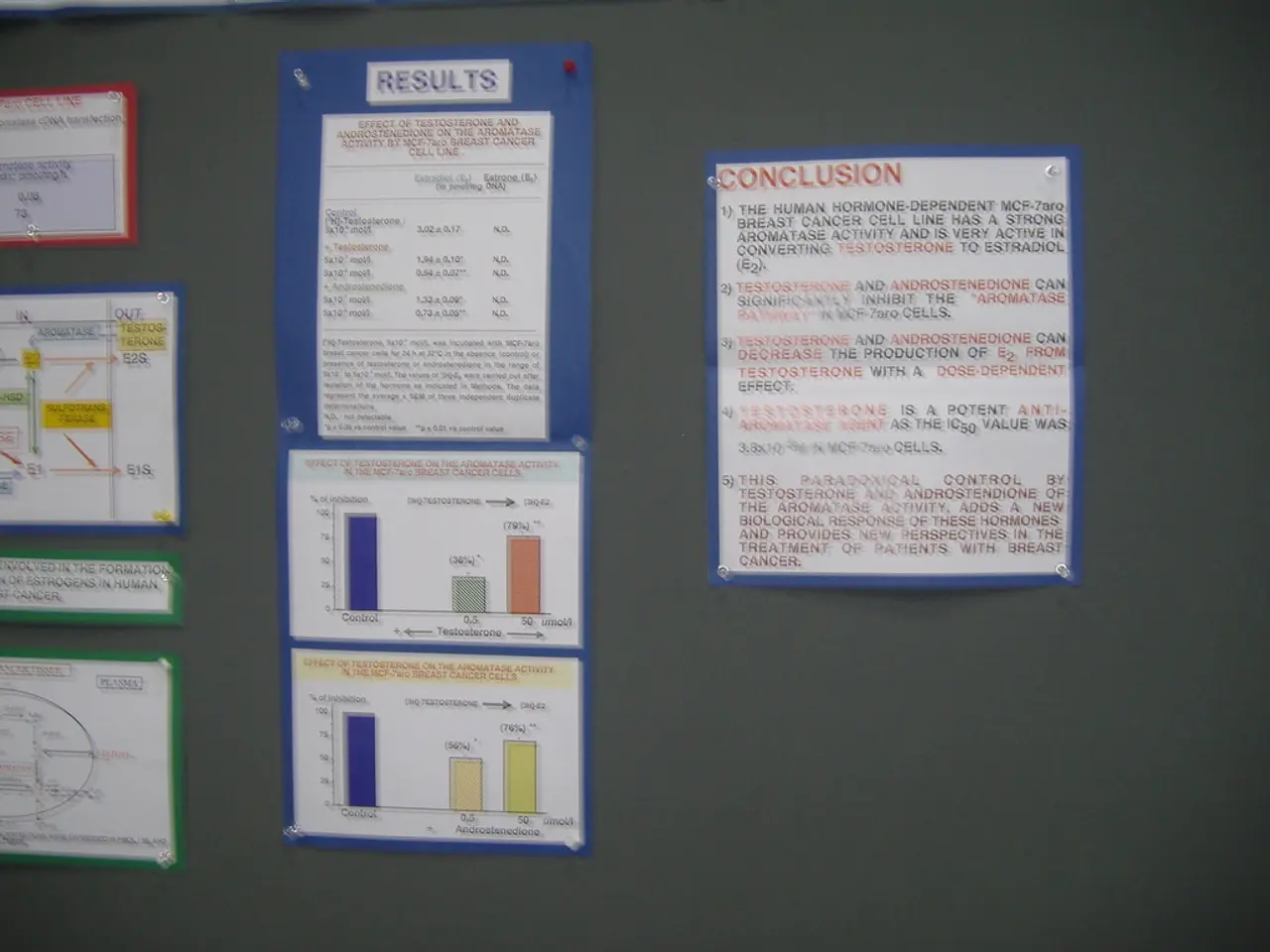Radiofrequency ablation: a medical procedure using heat energy to destroy targeted tissue, often used in the treatment of certain types of heart conditions and liver cancer.
Radiofrequency Ablation (RFA) is a minimally invasive therapy that has been making waves in the medical world for several decades. First used for medical purposes in 1931 by Dr. Martin Kirschner, RFA has evolved significantly since then, with researchers advancing the field of medicine in various ways.
Patients undergoing RFA as part of an outpatient treatment plan can typically resume normal activities within 24 hours after the procedure is complete. This makes RFA an attractive option for many, as it offers a quicker recovery time compared to traditional surgical procedures.
RFA is being used in a wide range of clinical applications, from treating conditions like ventricular tachycardia, Barrett's esophagus, long-term treatment of chronic lower back pain, and hypertension through renal denervation, to more recent developments in pain management and cosmetic procedures.
One exciting area of research is the development of advanced electrode technologies, such as thin-film electrodes, which enable more accurate and efficient ablation by using ultra-thin conductive layers for targeted tissue treatment. For example, NeuroOne’s OneRF Ablation System integrates thin-film, stereoelectroencephalography (SEEG)-guided RF technology to precisely ablate neural tissue while simultaneously monitoring electrical signals with a single electrode, enhancing both diagnostic and therapeutic capabilities.
In the field of pain management, genicular nerve ablation for chronic knee osteoarthritis pain is a common RFA procedure. In oncology, RFA is used for tumor ablation with fewer postoperative complications and improved preservation of healthy tissues compared to surgery. However, there is ongoing debate and research regarding patient selection, technique optimization, and long-term efficacy for conditions like knee osteoarthritis, reflecting an interest in personalized and anatomically guided RFA treatments to maximize pain relief while minimizing side effects.
Studies also compare RFA to other interventions, such as surgical sympathectomy for hyperhidrosis and stereotactic body radiotherapy (SBRT) for cancer, to better define relative benefits and adverse event profiles. Future research trends project a steady market growth driven by such technological innovations aiming to shorten procedure duration, improve therapeutic precision, and expand applications in cardiovascular, cancer, gynecological, orthopedic, urological, and cosmetic treatments.
The trend toward integrating diagnostic and therapeutic functions in RFA devices, alongside development in non-thermal and hybrid ablation technologies, point to an evolving landscape prioritizing minimally invasive, effective, and tailored care.
Vantage MedTEch offers proprietary platforms that can help accelerate RFA projects to market, reducing development timelines by 60%. To learn more about Vantage MedTEch's services, contact their team.
RFA can also be used to treat poorly functioning veins, particularly in a patient's legs. Thyroid nodules can be treated non-surgically with RFA, offering shorter recovery time, reduced invasiveness, and potential suitability for patients not eligible for open surgery.
RFA procedures involve patient preparation, probe insertion guided by imaging equipment, ablation of the target tissue using radio waves, and aftercare. In some cases, RFA procedures can be repeated multiple times as part of a single treatment session if a multi-probe device isn't feasible.
The market for RFA devices is expected to grow significantly, with a projected increase from USD 3.5 million in 2022 to over USD 6.5 million by 2028. As research continues to advance and new applications for RFA are discovered, it is clear that this minimally invasive therapy will continue to play a crucial role in modern medicine.
In conclusion, current and future RFA research trends emphasize advanced electrode technologies for enhanced precision and efficiency, expansion into diverse clinical applications, personalized, anatomically guided approaches to improve outcomes, comparative studies with other treatment modalities to refine indications and improve safety, and market growth supported by innovation aimed at reducing complications and procedure time. The history, present-day uses, and up-and-coming RFA research trends will be discussed in this blog. Vantage MedTEch provides leasable platform systems for validation in both bench and in-vivo settings.
- In the medical-conditions domain, Radiofrequency Ablation (RFA) is used for treating a variety of conditions, such as ventricular tachycardia, Barrett's esophagus, chronic lower back pain, hypertension through renal denervation, and even cosmetic procedures.
- The field of medical-conditions treatment has seen significant advancements in RFA technologies, like thin-film electrodes, which increase precision and efficiency in targeted tissue treatment, as seen in NeuroOne’s OneRF Ablation System.
- Aside from its traditional uses, RFA is being explored in health-and-wellness areas like pain management and non-surgical treatments for conditions like hyperhidrosis and poor leg vein function.
- The finance and technology sectors are also playing a part in the growth of RFA, with companies like Vantage MedTEch, contributing to shorter development timelines and the expansion of RFA's applications through their proprietary platform systems.




